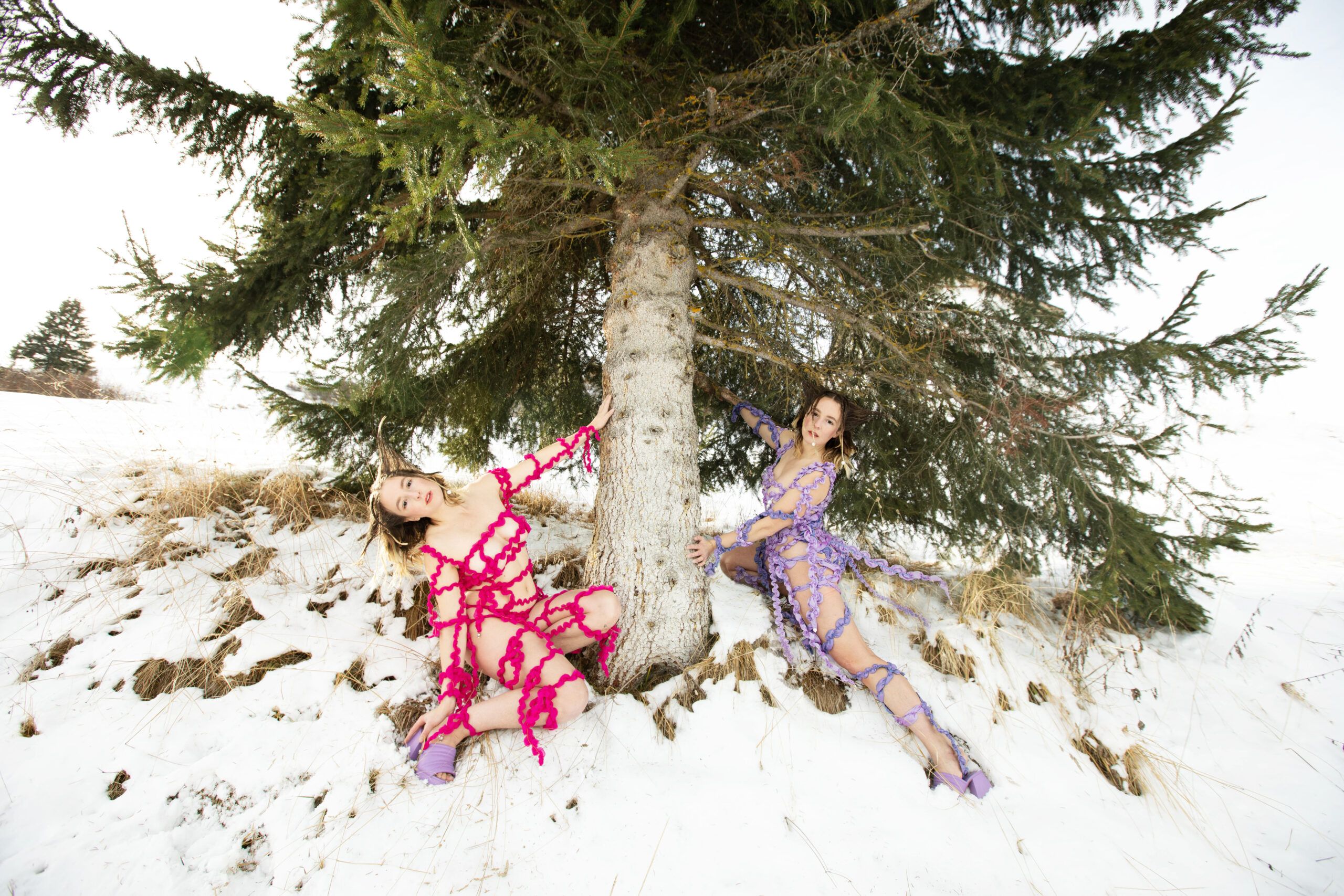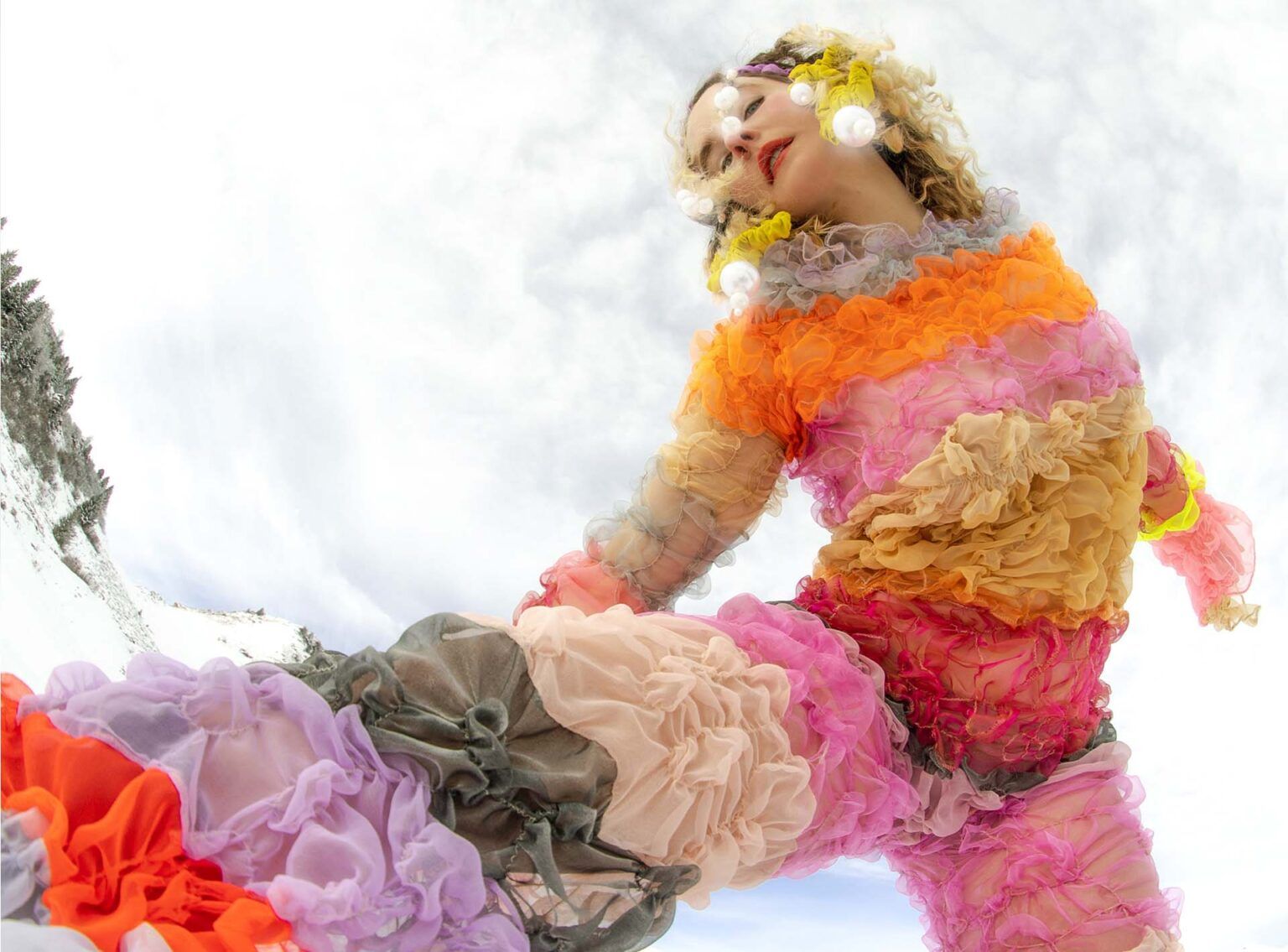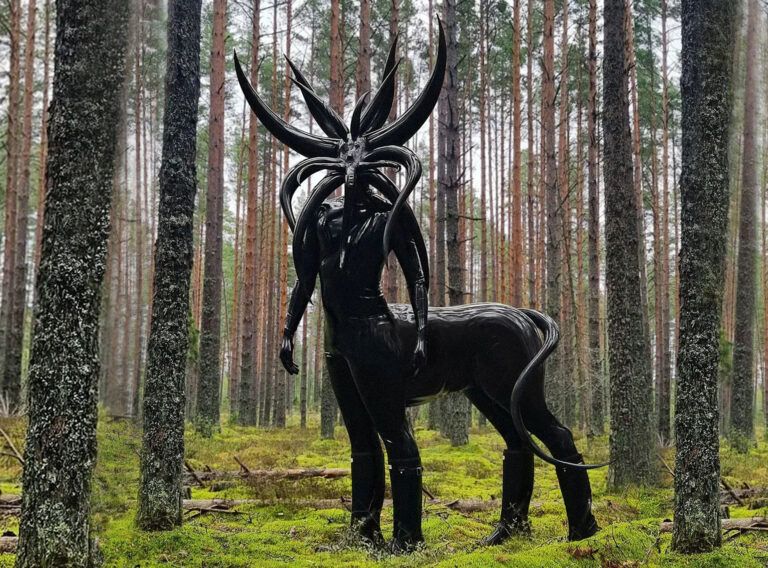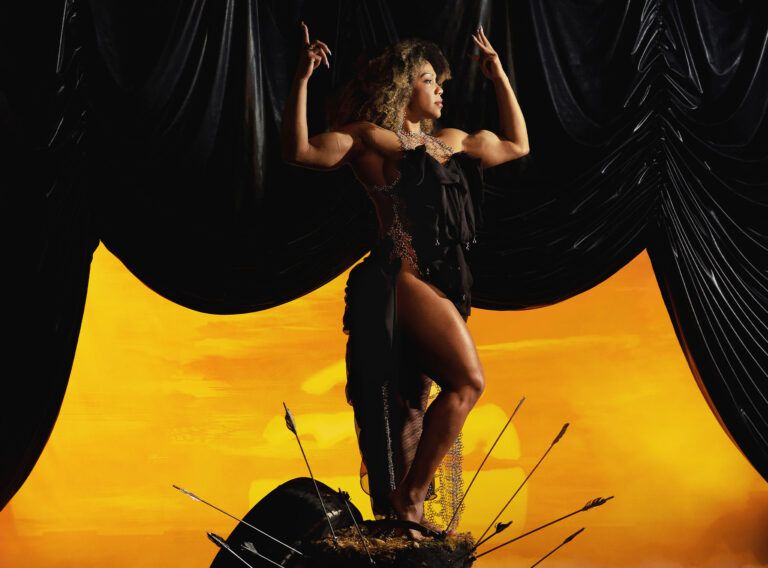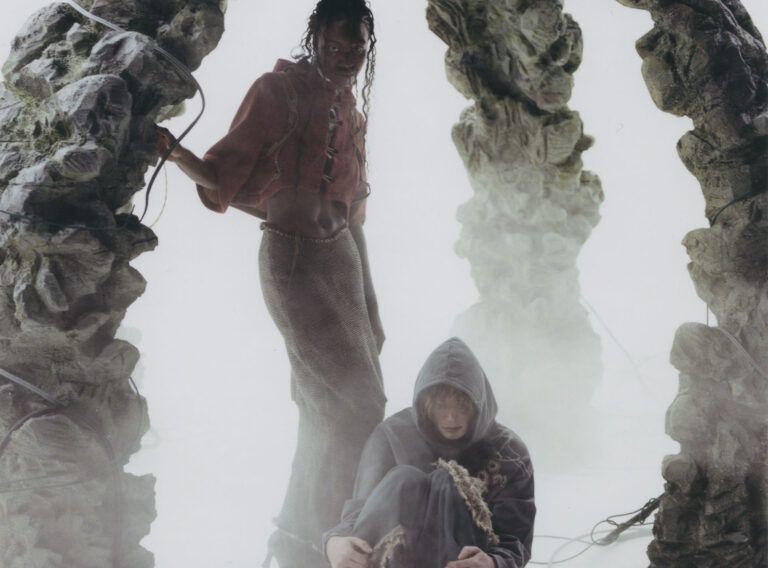As an artist, what is your goal in contributing to the world?
I think I want to create an emotional connection between humans. Through my music, I try to share my inner worlds as honestly as possible. I want us to share meaningful moments that make us feel alive. With my art, I aim to stimulate people to transform, to transmutate further, to help create a better future. I want us to be entwined with nature and to re-think identity beyond our beauty standards, beyond binaries and all that annoying stuff. I’d love for our values to shift. Our dreams to cross-pollinate. We should gain more power again. Through the music, I’d love to encourage us to share our fears so we feel less alone in them. A goal of the music is also to create communities. For love to grow like fungi, into all corners of this world. I want us to keep dreaming.
Could you share more about your creative process, including any rituals or techniques you use to stay focused on your projects?
I’ve been quite nomadic with my practise, but am currently nesting in an old house in the mountains for a year, where I have my atelier. I’m really grateful for that because so far, I haven’t really found the time and space to embark upon beautiful, spacious processes.
Oftentimes, they’re quite quick and purpose-built under time pressure, which made me a bit sad… So now I’m really going to try to create more rituals within my processes to make them sustainably joyous, beautiful, free and sacred.
My main ritual is to sing outside; in nature, wherever possible. Away from other human beings. I struggle to find a creative free head amongst groups of people or busy social spaces. I also really love early mornings when the world is still asleep; starting the day with focus and purpose, reading one page in a book, enjoying the rising of the sun and the light change the environment – whilst envisaging the work. I guess for me, it’s about moments where I remove myself a bit from society – to take some distance from it – and that allows me to feel much more at ease. I just float in thoughts and feelings and can tune into my body, my feelings and my inner world.



Your latest project FUGA FUTURA centres around the concept of a queer utopia. Could you describe your vision of an ideal society?
For me, pure utopia becomes less and less the focal point, it really mixes in with as many dystopian elements. So FUTURA is becoming more of a nest for all the dreams and the fears – a collision of big emotions. I’m also not an extremely conceptual person; with this work, I very much follow my sensual, sinuous needs and desires. This definitely drew me towards alternative communities; re-thinking our human-centric conception of identity, celebrating our differences or queerness… Society / politics / inequality / big tech is just al so depressing. I am thinking a lot about the potential of love to be a change-maker. What if it is liberated from our social structures, for which we reserve those feelings for… I have no answer but I’m trying to really follow hints towards utopia whilst very much keeping anxieties also on the surface, and incorporate future visions wherever possible. It actually feels more like an an act of dreaming, radically. Taking dreams dead seriously, throwing all energy at them, embracing the emotions and challenges that come with it, in order to try and recycle all the frustration and disappointment that comes with it into new motivation.
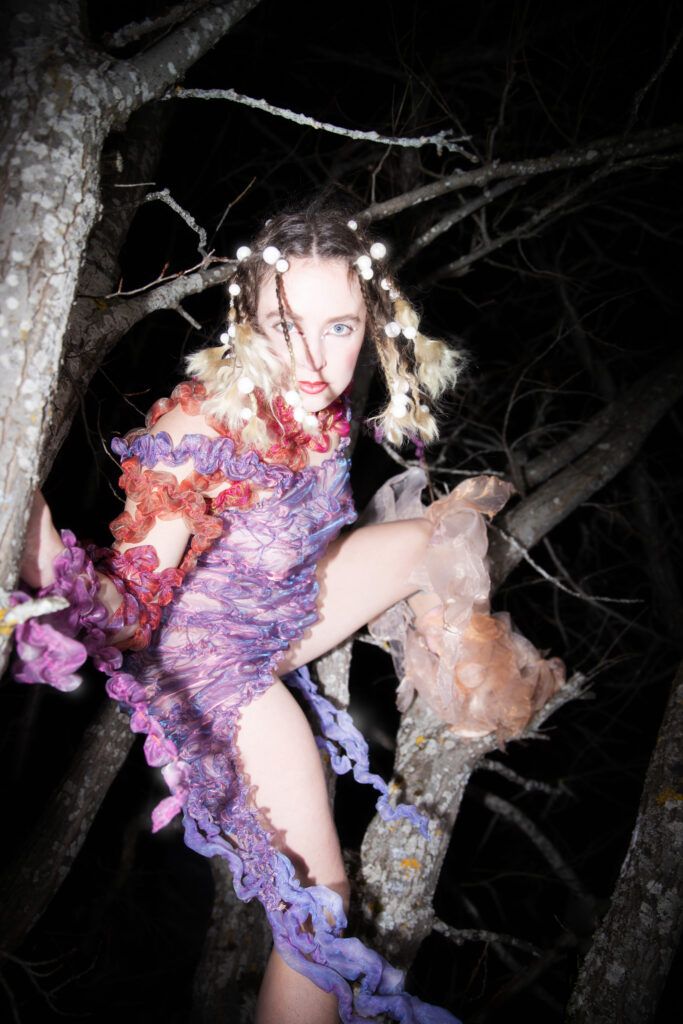
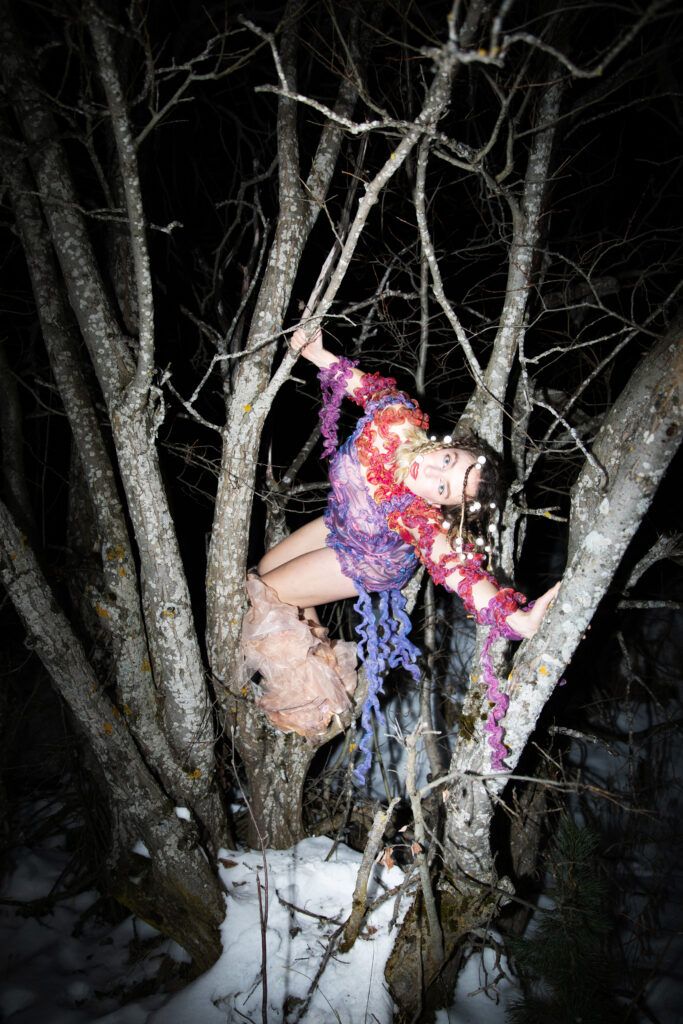
Can fashion and music be used as tools for empowerment and social change?
Yes, totally. Music can really connect and touch humans on a deep level. It can also really be some sort of value or memory box, songs can really be attached to personal emotions or thoughts and become important symbols in our lives… And fashion is such a strong visual tool to rethink identities and push borders.
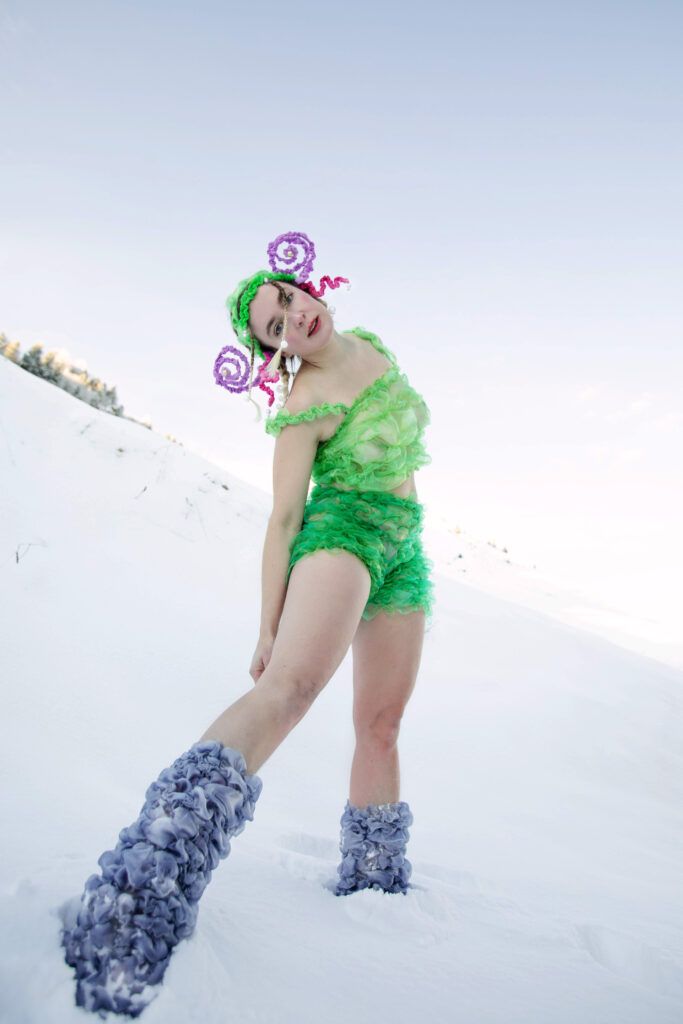
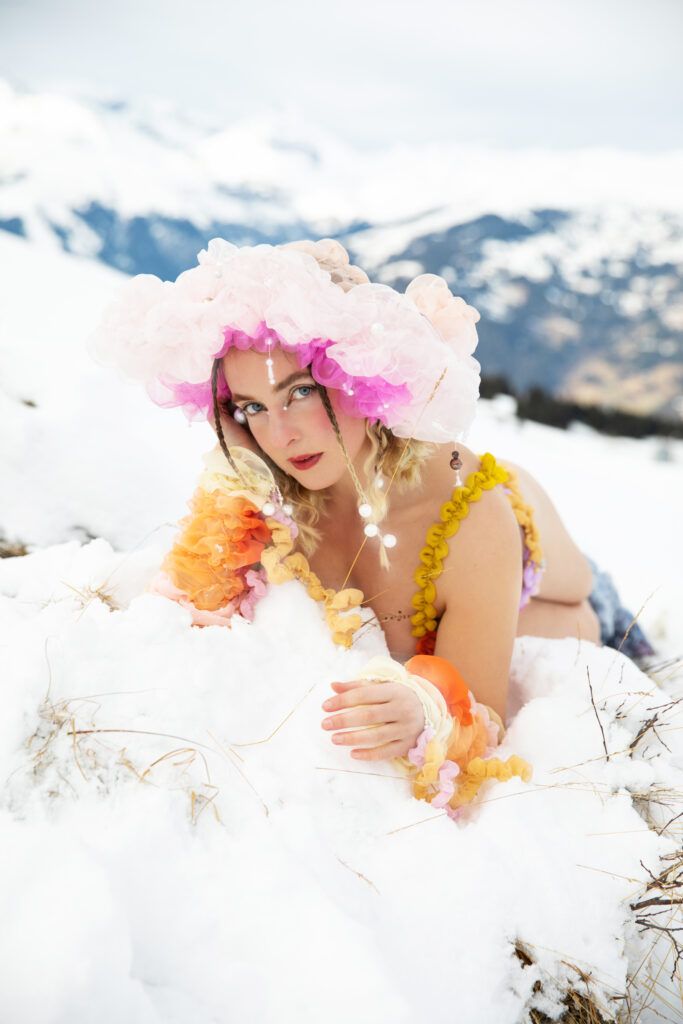

Last question. What role does fashion design play in the performance and presentation of your music?
So I tried to crystallise every song into a creature identity, to physicalise the music with something more tangible. Out of that creature grew a creature gamecard, and out of this I created a little ArtFashion collection. Each song has its own textures, forms and wearables. Now for the live shows, we have dancers transforming from one creature to the next alongside the songs, so visuals and sonics intertwine constantly – and towards the end, local creatures in ArtFashion creep into the room from all corners, hopefully the audience gets more and more absorbed and immersed with the FUTURA world we are creating.
